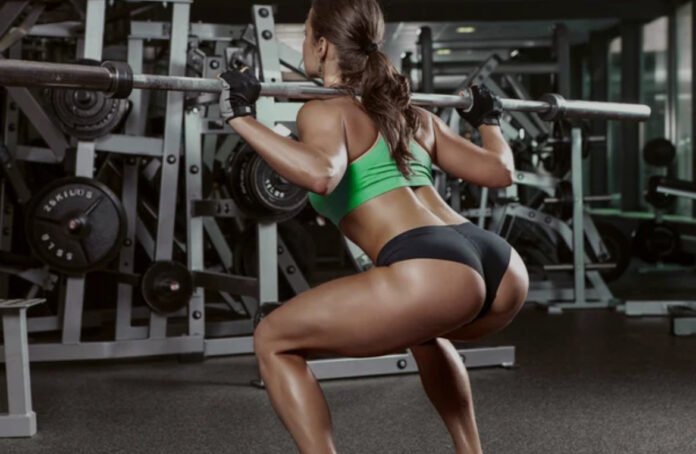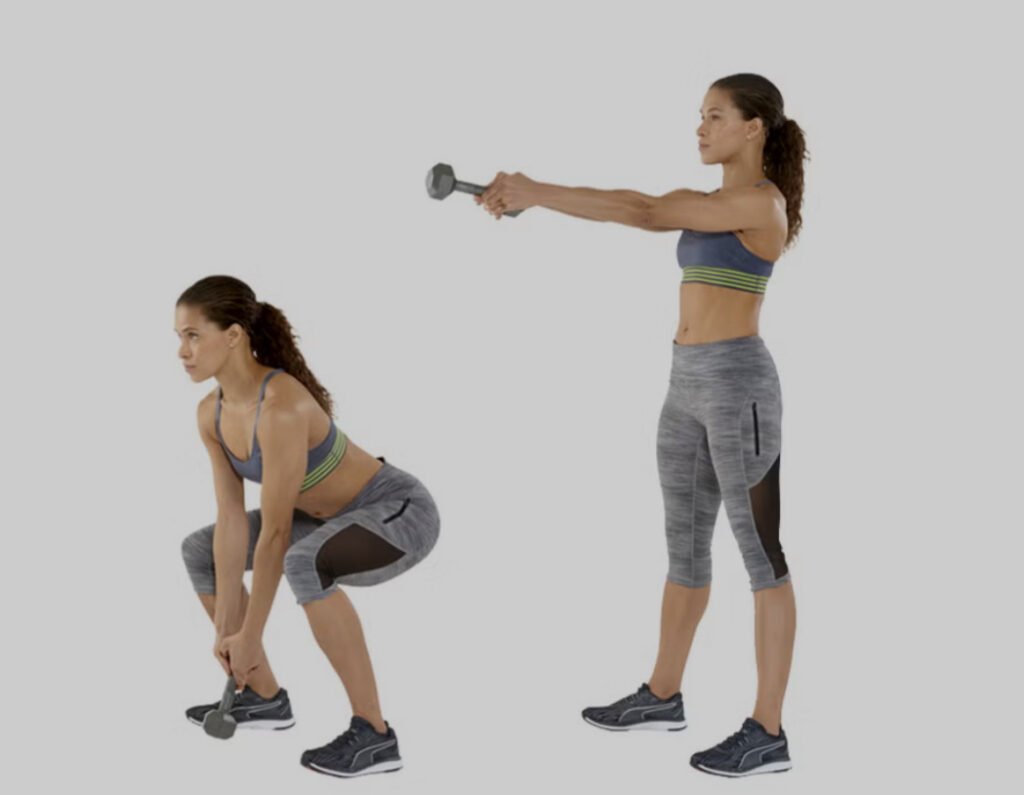Introduction: The Muscle-Building Debate of 2025
When it comes to building muscle, the debate between bodyweight vs weights continues to divide fitness enthusiasts. Some swear by push-ups and pull-ups, while others load barbells and kettlebells to see gains. But which one actually works faster?
As we enter 2025, the science of muscle growth is more refined than ever. Understanding how different training methods affect strength, endurance, and hypertrophy is crucial — especially for those seeking efficient, sustainable progress.
This article explores five proven facts that reveal the real winner in the bodyweight vs weights debate, helping you optimize your routine for faster muscle growth.
1. Progressive Overload: Easier With Weights, Not Impossible With Bodyweight
Progressive overload — gradually increasing resistance — is the gold standard for muscle growth. Traditional weightlifting makes this concept easy: just add more plates. However, bodyweight training can also offer progressive overload through:
- Advanced variations (e.g., one-arm push-ups, pistol squats)
- Increased time under tension
- Manipulating tempo or angles
Key Insight:
While weights offer a more linear path to progressive overload, bodyweight training still supports hypertrophy if structured properly.
Verdict: Weights win for ease, but bodyweight isn’t far behind with smart programming.
2. Muscle Activation: Both Engage, But Differently
Different exercises activate muscle groups in different ways. Studies show that:
- Weighted squats activate more quadriceps, glutes, and lower back.
- Push-ups can match bench press chest activation when performed correctly.
- Pull-ups are unrivaled for upper-back development.
Muscle Activation Research:
A 2023 EMG (electromyography) study found that bodyweight training activates stabilizer muscles more, while weighted exercises isolate primary movers more effectively.
Verdict: For raw power, weights win. For functional strength and stability, bodyweight shines.
3. Equipment, Space & Accessibility: Bodyweight Is More Efficient
In 2025, home fitness remains popular. The average person may not have access to dumbbells, racks, or machines.
- Bodyweight training requires no equipment
- Can be done anywhere — parks, hotel rooms, small apartments
- Promotes consistent training without logistical barriers
This makes bodyweight routines ideal for:
- Travelers
- Beginners
- Those without access to a gym
Verdict: For efficiency and accessibility, bodyweight is the clear winner.
4. Injury Risk and Recovery Time
While both training types carry risk, bodyweight movements generally result in fewer injuries due to:
- Lower external loads on joints
- Improved body awareness and control
- Reduced spinal compression
Weights, especially when misused, can lead to:
- Strains
- Overtraining
- Chronic joint stress
However, when done correctly with proper form, weightlifting is perfectly safe — and necessary for athletic performance.
2024 Injury Report (NSCA):
- 60% of gym-related injuries involved improper form with weights.
- Only 22% involved calisthenics or bodyweight resistance.
Verdict: For longevity and recovery, bodyweight offers a safer route to muscle growth.
5. Muscle Growth Potential: Weights Offer Greater Mass Gain
Let’s be clear: weights are unmatched for maximum hypertrophy — especially in the upper body and for compound lifts like:
- Bench press
- Deadlift
- Squats
- Overhead press
Bodyweight training does lead to muscular development, particularly in:
- Core
- Shoulders
- Arms
- Upper back (pull-ups, dips)
But once your own body weight is no longer enough resistance, growth may plateau unless additional weight is added.
Hybrid Training Solution:
A growing 2025 trend is combining both approaches:
- Bodyweight for warm-ups, core, and stability
- Weights for mass-building compound movements
Verdict: For maximum muscle size, weights are superior. For lean muscle and tone, bodyweight delivers.
When to Use Bodyweight vs Weights (Based on Goals)
| Goal | Best Method |
| Max Muscle Mass | Weights |
| Functional Strength | Bodyweight |
| Flexibility & Mobility | Bodyweight |
| Sport-Specific Performance | Weights + Bodyweight |
| Beginner Fitness | Bodyweight |
| Athletic Conditioning | Hybrid |
Bodyweight Training Plan (Sample Week)
Day 1 – Upper Body Strength
- Push-ups – 4 sets of 15
- Pull-ups – 4 sets to failure
- Dips – 3 sets of 12
Day 2 – Core & Mobility
- Planks – 3×60 sec
- Leg Raises – 4 sets of 15
- Mobility flow – 15 mins
Day 3 – Lower Body
- Pistol Squats – 3 sets of 8 each leg
- Glute Bridges – 4 sets of 20
- Wall Sits – 3 sets of 60 sec
Weight Training Plan (Sample Week)
Day 1 – Push Day
- Barbell Bench Press – 5×5
- Dumbbell Shoulder Press – 4×10
- Triceps Pushdown – 4×12
Day 2 – Pull Day
- Deadlifts – 4×6
- Barbell Rows – 4×10
- Bicep Curls – 3×12
Day 3 – Legs
- Back Squats – 5×5
- Leg Press – 4×12
- Hamstring Curls – 4×15
Real-World Testimonies
Marcus, 28 – Gym-Goer
“I built 15 lbs of muscle using heavy compound lifts. Weights work faster for size.”
Leila, 32 – Busy Professional
“Bodyweight workouts keep me lean and injury-free. Perfect for home training.”
Dr. Elena Ruiz, Sports Therapist:
“Combining bodyweight and weights leads to better overall performance. Each serves a distinct purpose.”
Facts
- Bodyweight vs weights training both stimulate muscle growth, but resistance levels and load progression determine which is more effective over time.
- One study found that in the bodyweight vs weights debate, free weights slightly outperform bodyweight exercises in hypertrophy when volume is matched.
- For beginners, bodyweight vs weights may not matter much—both provide enough resistance to initiate strength and muscle gains.
- When comparing bodyweight vs weights, weights offer easier overload progression, crucial for consistent muscle growth beyond plateaus.
- The bodyweight vs weights debate depends on your fitness goals: bodyweight is ideal for functional strength, while weights maximize muscle size.
- Calisthenics fans argue bodyweight vs weights should be judged by real-world mobility, not just gym aesthetics.
- Advanced athletes often cycle between bodyweight vs weights to avoid overuse injuries and maintain muscle balance.
- In terms of convenience, bodyweight vs weights training favors bodyweight routines—no equipment, no excuses.
- Studies show that in the bodyweight vs weights contest, both methods yield similar hormonal responses when intensity is matched.
- The final word on bodyweight vs weights: each method has unique advantages, and combining both may produce the fastest muscle growth.
Final Thoughts: Why Bodyweight vs Weights Is the Right Question in 2025 (500 words)
The question of bodyweight vs weights isn’t just about choosing one side over the other — it’s about knowing what works best for your specific goals, body type, and lifestyle in 2025.
If your goal is maximum hypertrophy and visible mass, resistance training with weights offers more precise and adjustable overload. You can isolate specific muscles, follow structured periodization, and increase resistance in small increments. That’s ideal for athletes, bodybuilders, or anyone seeking rapid muscle gains.
However, the benefits of bodyweight training cannot be overlooked — especially in a post-pandemic world where many people prefer flexible, equipment-free routines. Exercises like push-ups, planks, dips, and pull-ups develop functional strength, joint stability, and lean muscle mass. Bodyweight workouts are scalable, safe, and ideal for improving mobility and injury prevention.
For those new to fitness, starting with bodyweight movements is safer and helps build neuromuscular coordination. Once you’ve developed a base level of strength and control, adding weights can accelerate your progress further.
It’s also worth considering hybrid routines. In fact, the most effective programs today blend both strategies:
- Use bodyweight exercises for mobility, warm-ups, and injury prevention.
- Use weights to target hypertrophy and push muscle boundaries.
The “vs” in bodyweight vs weights doesn’t mean conflict — it means comparison. And in this comparison, the best results come from understanding the strengths of both.
In 2025, personalized fitness is king. Instead of following a one-size-fits-all approach, optimize your training around your goals, your environment, and your personal preferences.
So the real winner? You — when you tailor your approach using both tools intelligently.
✅ Call to Action:
Ready to build muscle smarter in 2025?
Subscribe to our weekly newsletter and get expert-crafted hybrid training plans, equipment-free routines, and weight-based workouts — straight to your inbox.
👉 Join the Fitness Revolution Now








